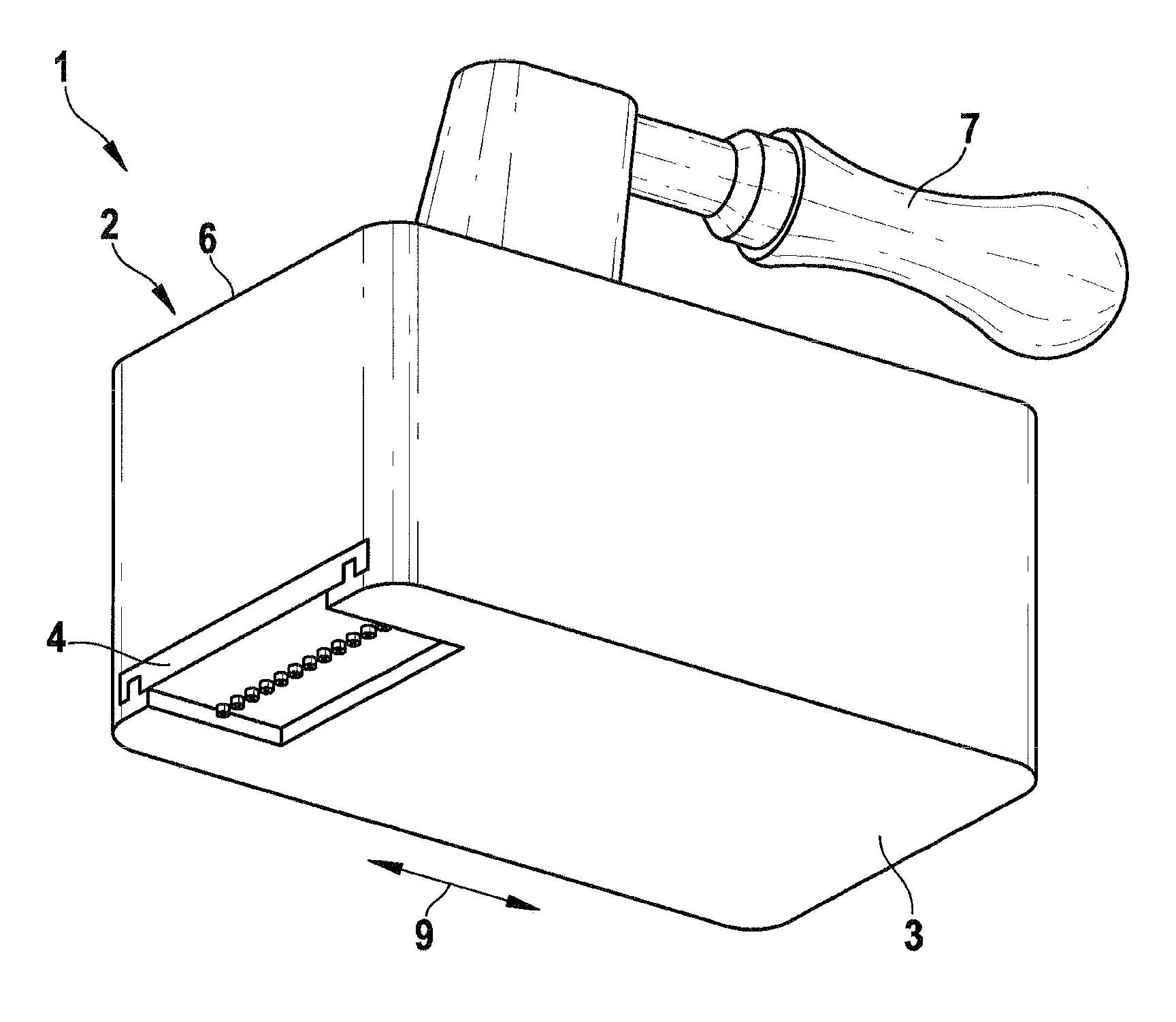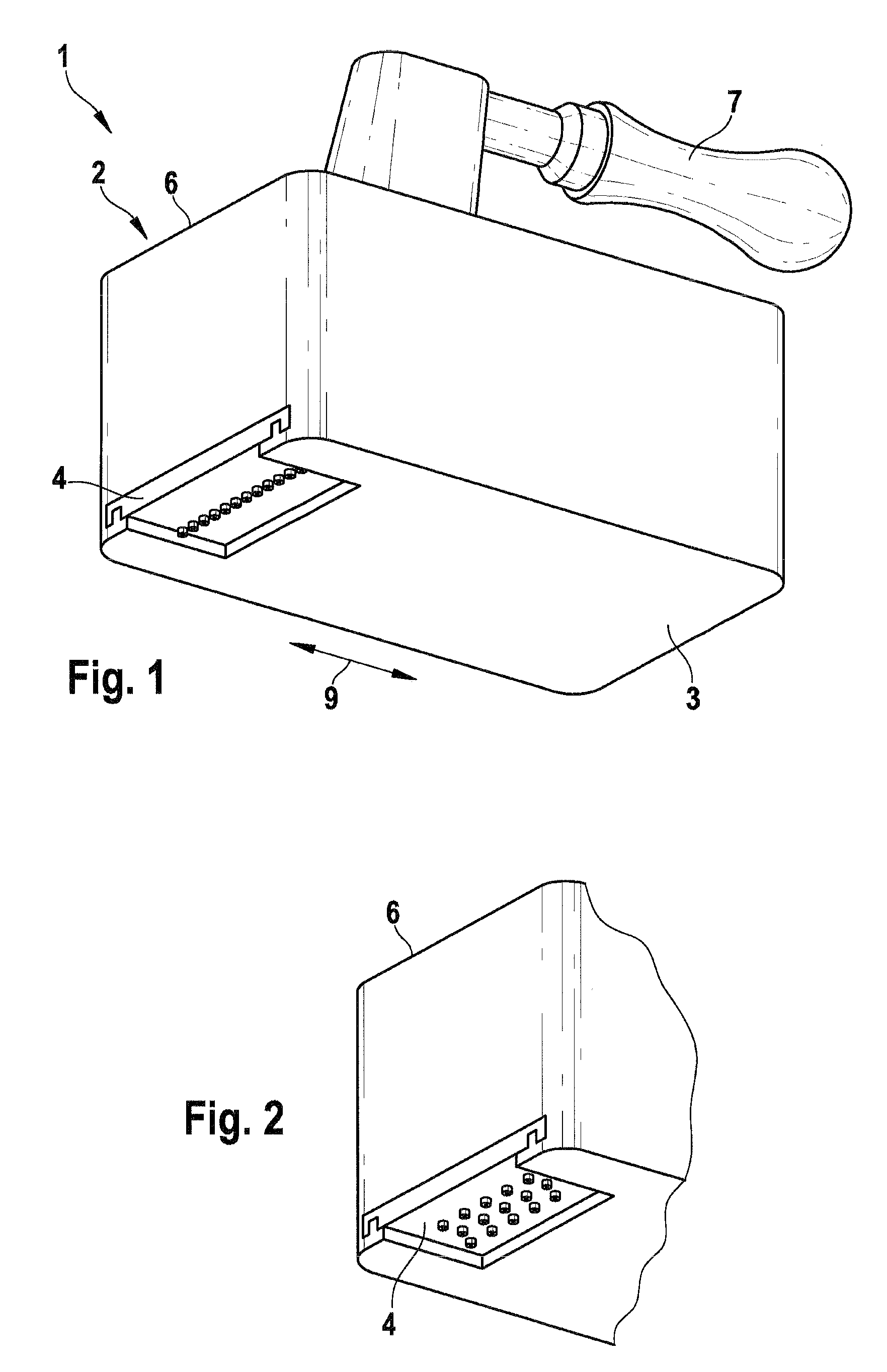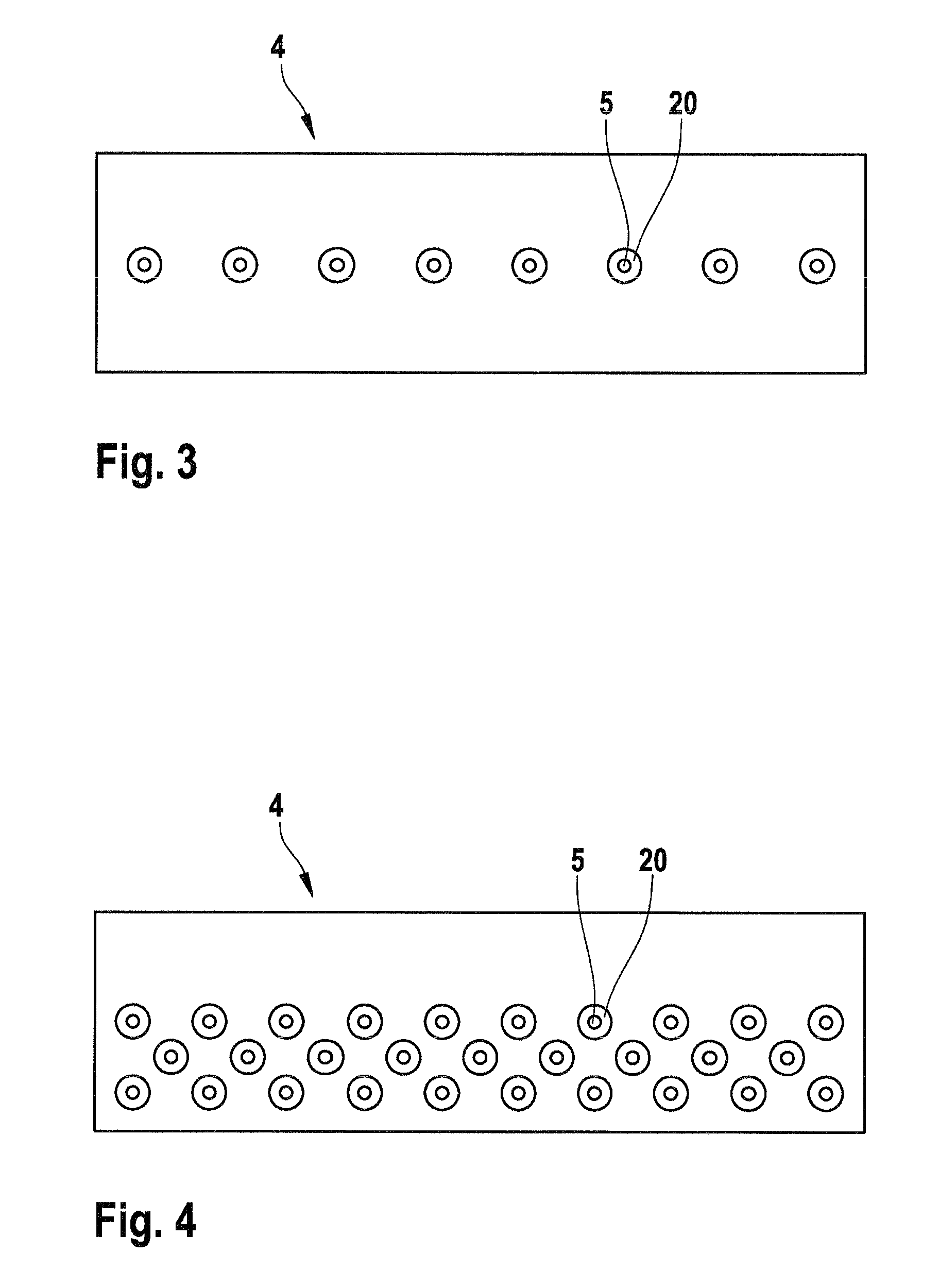Device for applying liquid coating materials
- Summary
- Abstract
- Description
- Claims
- Application Information
AI Technical Summary
Benefits of technology
Problems solved by technology
Method used
Image
Examples
Example
[0024]The housing 2 of the device 1, in its bottom 3, has an inserted nozzle plate 4 with nozzle openings 5. On the top side 6, diametrically opposite the bottom 3, the device 1 is provided with a handle 7.
[0025]In principle, the handle 7 may also be provided laterally of the device 1. Although this is not shown, the device 1 is expediently provided in the region of the bottom 3, and optionally also laterally cantilevered relative to the bottom 3, with supporting elements, such as rollers, wheels, or the like, by way of which a preferred working spacing from the application surface 8, indicated in FIG. 8, can be set and adhered to as a minimum spacing.
[0026]FIGS. 1 through 4 show that the device 1 can be operated in conjunction with various arrangements of nozzle openings 5; FIG. 3, corresponding to FIG. 1, shows an arrangement of the nozzle openings 5 in one row, while FIG. 4 in conjunction with FIG. 2 shows an arrangement of nozzle openings 5 in a plurality of rows. The rows of no...
PUM
 Login to View More
Login to View More Abstract
Description
Claims
Application Information
 Login to View More
Login to View More - R&D
- Intellectual Property
- Life Sciences
- Materials
- Tech Scout
- Unparalleled Data Quality
- Higher Quality Content
- 60% Fewer Hallucinations
Browse by: Latest US Patents, China's latest patents, Technical Efficacy Thesaurus, Application Domain, Technology Topic, Popular Technical Reports.
© 2025 PatSnap. All rights reserved.Legal|Privacy policy|Modern Slavery Act Transparency Statement|Sitemap|About US| Contact US: help@patsnap.com



